I’m starting small.
How’s this?

I’m outside and working on trees again.
Well, one small tree, to begin with.
It’s a willow leaf ficus (ficus salicaria or nerifolia, salicaria etc..) I’ve had for about ten years or so. When I got it it had maybe half the girth it does now.
I need to remove the wire and do some trimming.

If’n you look real close, you’ll see some wire biting.
Perfecto! Just enough.
Let’s take a look at the nebari (root spread) and I’ll rant a little about trends and fashion.
Here’s my humble trees nebari.
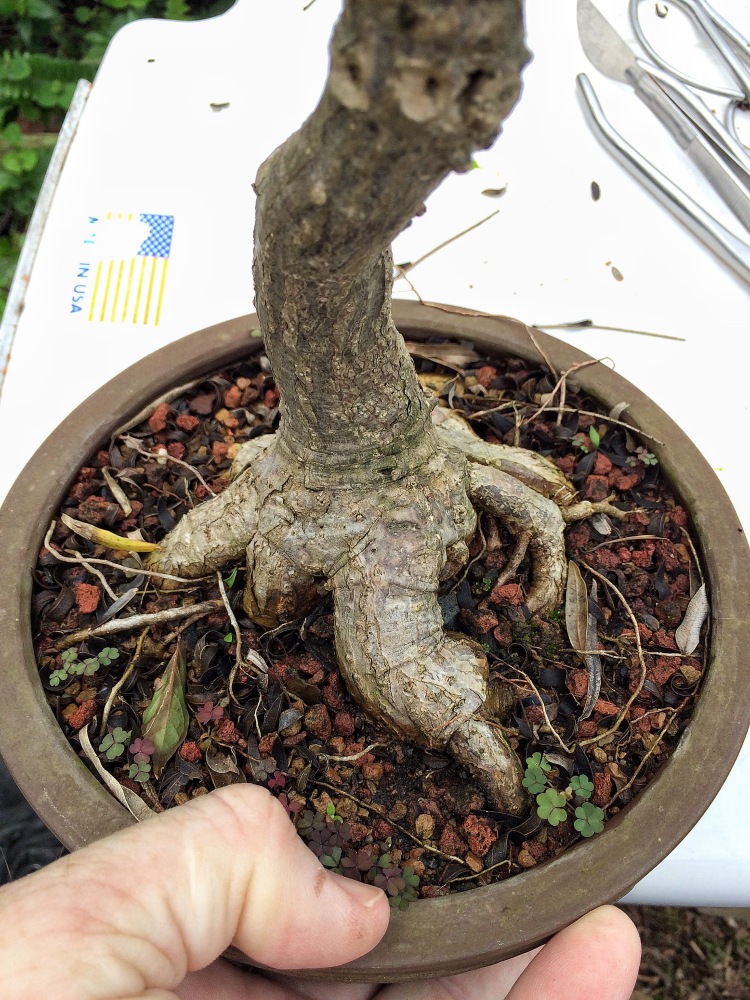
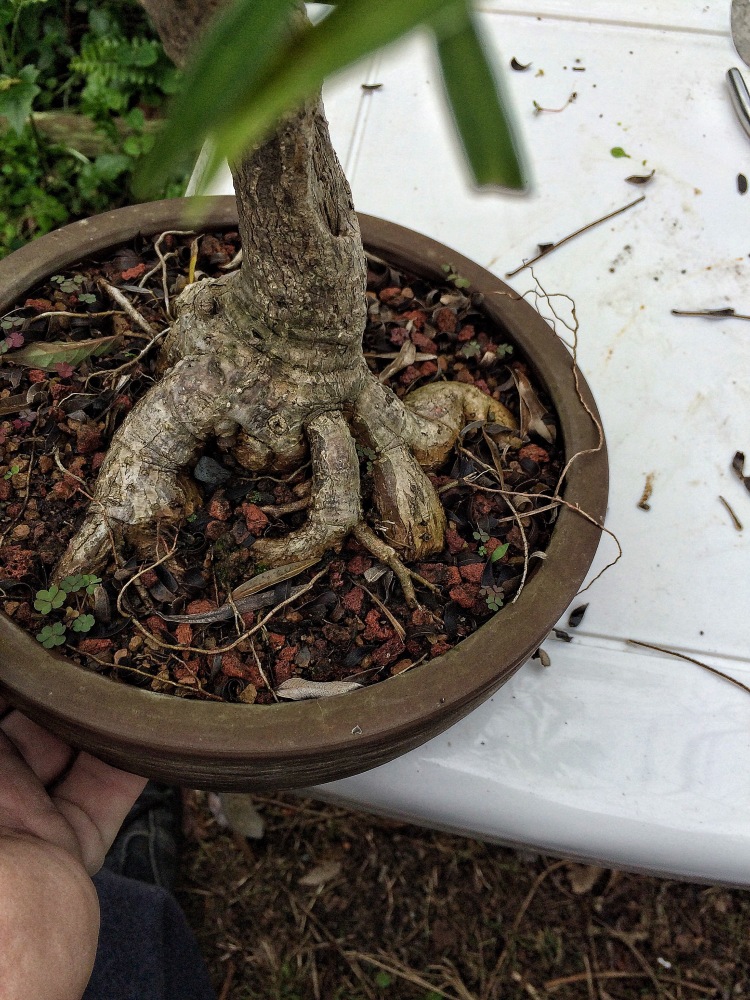
Now, except for one root, I like the nebari. It’s natural looking with roots radiating the full 360 degrees around the trunk. They’re not artificially uniform either.
Now (here’s where I might get in trouble) this is a pic by my friend, Mark Fields, an excellent bonsai artist and teacher who is in Japan as we speak.
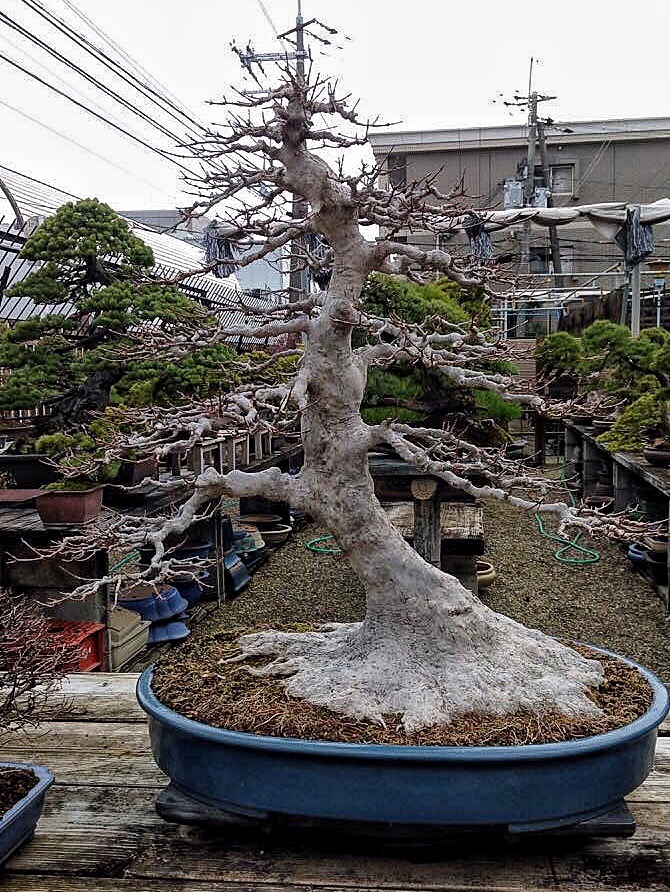
It seems that this “look” is becoming fashionable, kinda like how high waisted shorts on women are coming into style.
Here’s a close up.
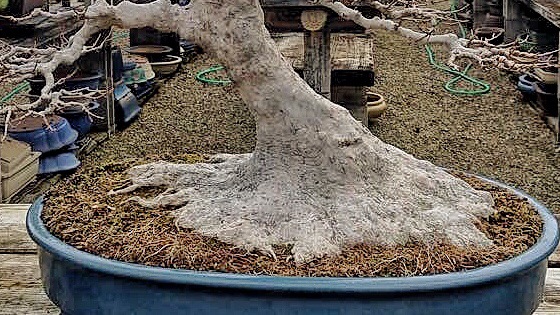
It doesn’t look very natural to me. In fact, it looks like poured concrete or melted plastic. The purpose of the nebari is to make the tree appear to be grabbing or clutching strongly into the earth. To give the tree stability.
This melted look, to me, makes the tree appear to be made of clay and someone splattered it onto the ground. It’s the opposite of strength and stability. It looks like it could fall over at any moment.
In fact, if this were a real tree in the ground and a tree surgeon (they call them arborists nowadays) were to look at it they’d say that the tree was unhealthy and in danger of falling over because the soil it is growing in is too shallow and the roots don’t go deep enough. Dare I say it but, an exaggerated and even grotesque looking root system like this one is glorifying an example of an unhealthy tree just waiting for a violent enough windstorm to knock it over.
Ok, rant over. I’m a little grumpy from my convalescence. Sorry.
Back to my tree.

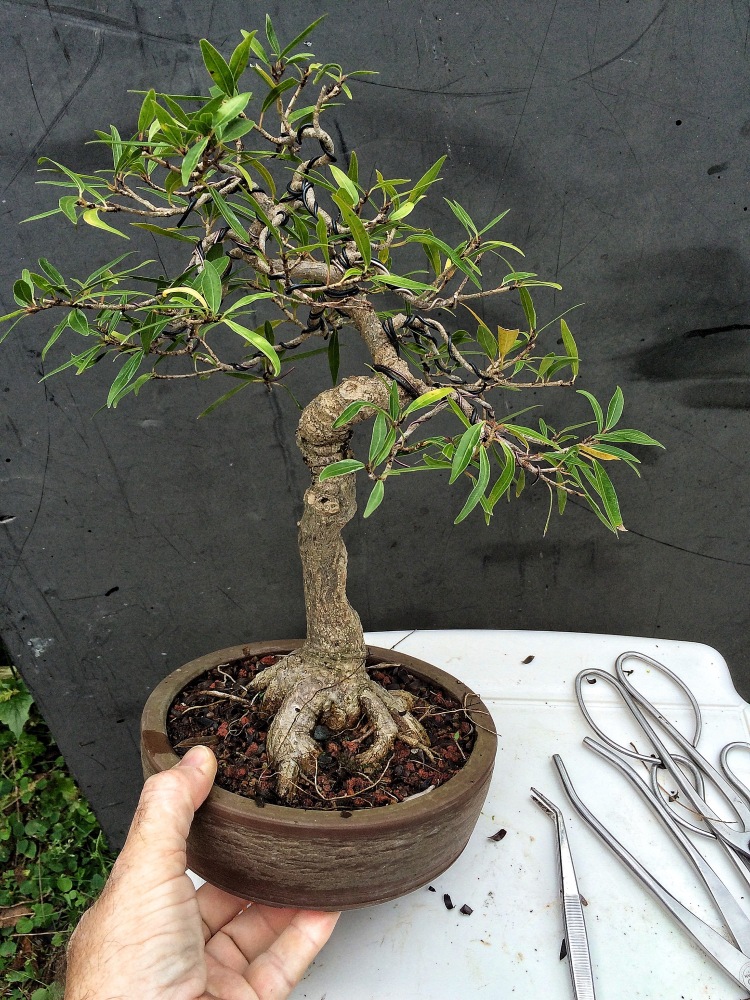
Since this is a bunjin style (or literati as many people call it. Which means that it is a free form, no rules style of tree) and it is in a round pot, the front of the tree is kinda around one of the above views.
First order of business, remove the wire.
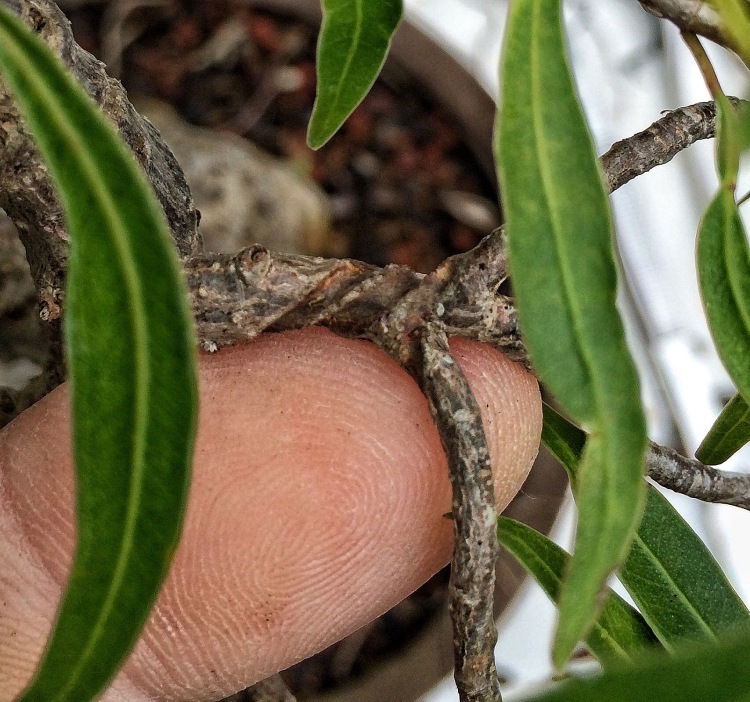
I’m sure I puzzled a few people when I made the statement earlier (Perfecto! Just enough) when I noticed that the wire was biting into the branches.
One will hear from many bonsai enthusiasts that it’s a serious breach of bonsai etiquette to allow the wire to bite into your trees. In fact, second to the tree having reverse (inverse, obverse) taper in the trunk line, wire cutting is the second most evil sin one can commit when growing bonsai.
So why am I so excited about these wire marks?
Wiring a tree helps us to position a limb where we want or need it for the artistic design we are trying to achieve.
The mechanism that makes the process of wiring useful is simple: the growth and lignification of a branch over time. The wire holds said branch in place and, when the branch hardens off, the wire comes off.
I work with ficus and ficus limbs tend to not want to stay where you’ve wired them, unless you’ve allowed the wire to cut in (to a small degree).
So, the small bit of wire cutting I’ve allowed should be just enough to ensure that the main branches stay put.
Hopefully.
Let’s see how this branch holds.

Ready?
Yay!
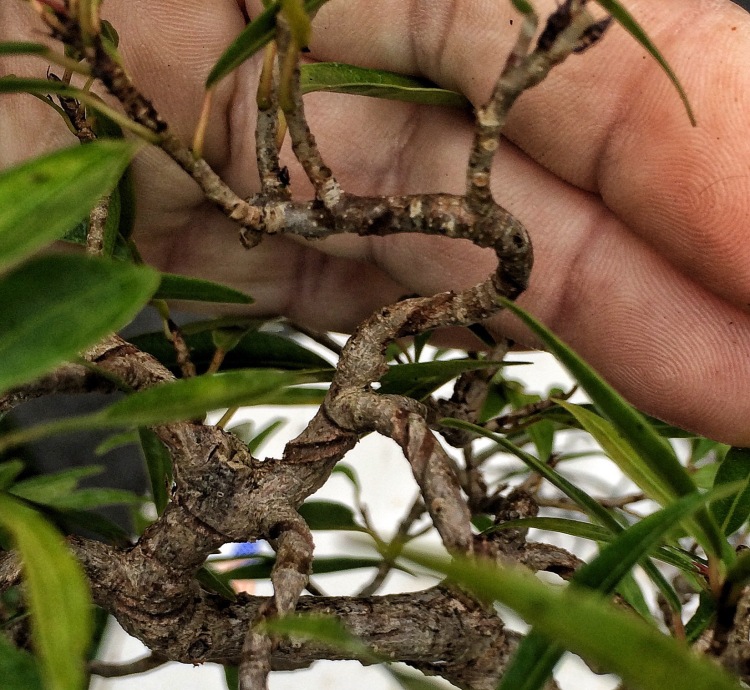
I’ll let you know if it’s still holding a week from next Tuesday.
I need to trim every branch tip on this tree. Now’s not the best time to do it though. It is mid January here in the F. L. A. Which means winter, and tropical trees in winter don’t grow much, unless, one has a greenhouse.
I, thanks to Dave, Paul, Steve, Guaracha, and Mark, do.
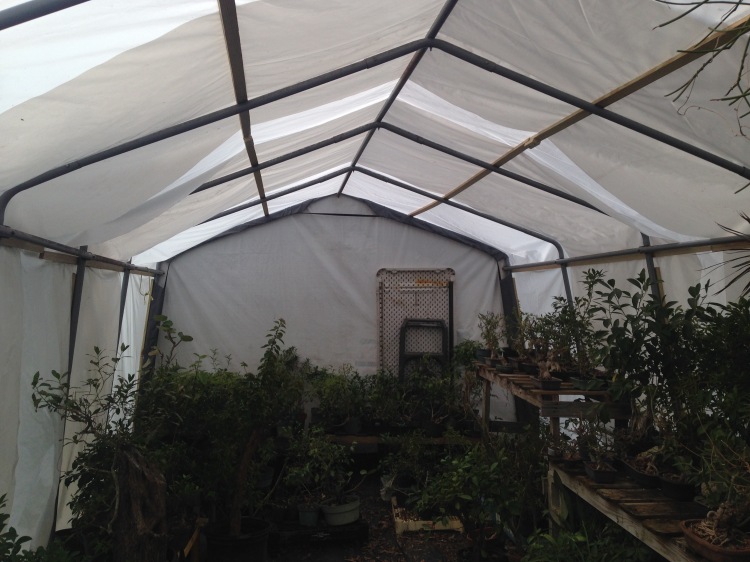
Since the tree has been outside in the couple of cold spells we’ve had, it’s dormant.
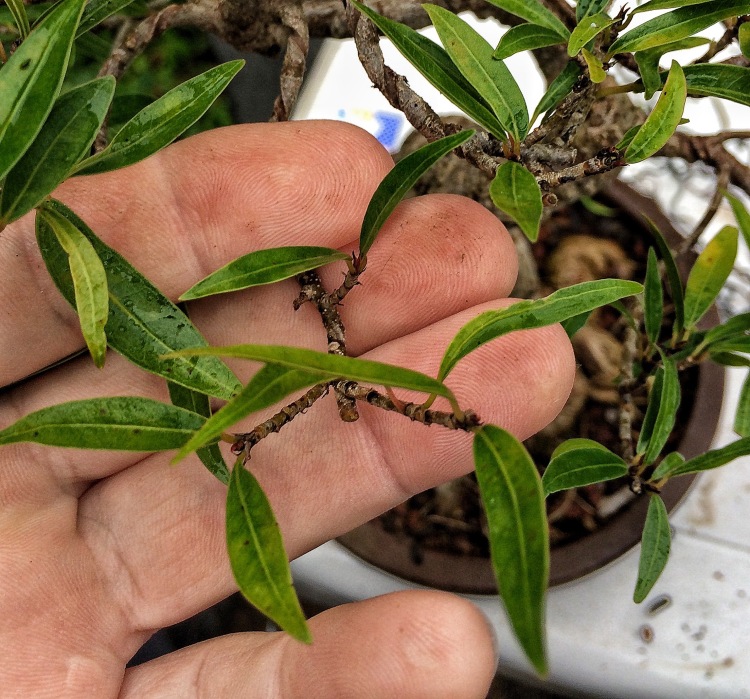
I’m going to trim all the tips……damn, it’s starting to rain.
We must move this operation inside.
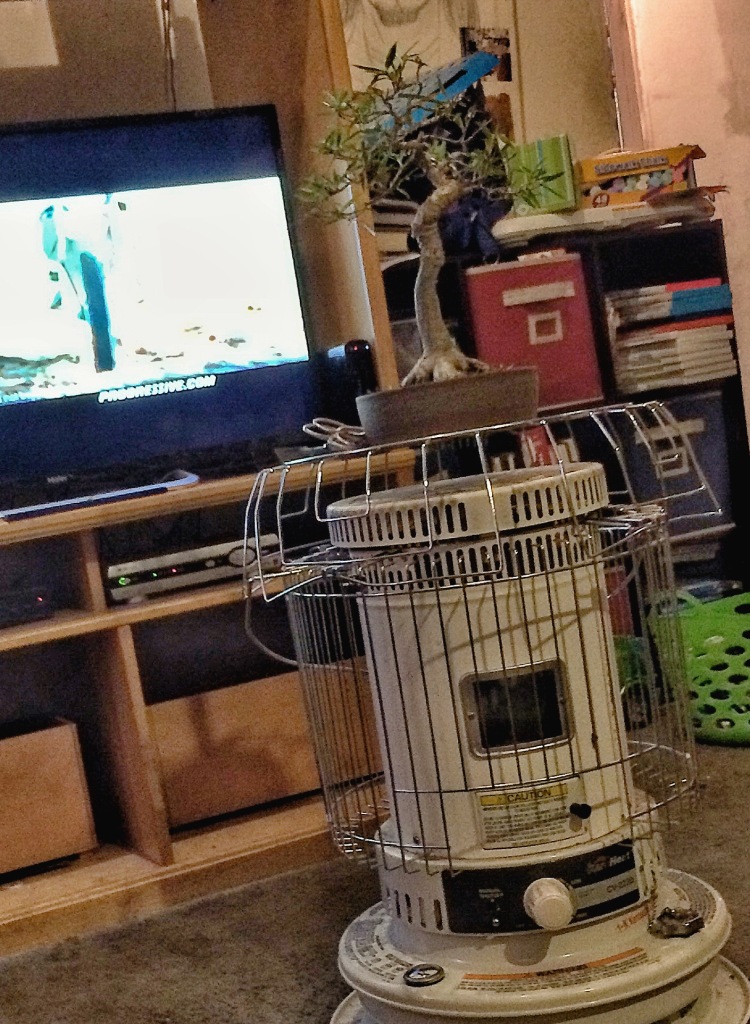
Back to it then, righty-o.
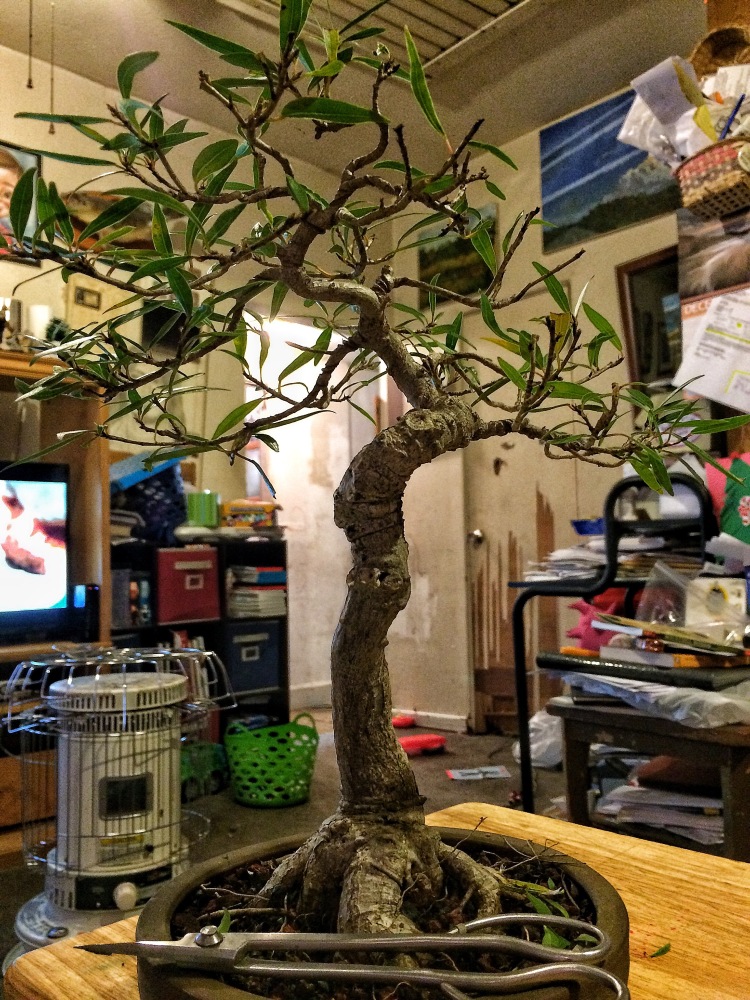
I’m going to make a mess on the carpet.
My wife said to go ahead so…,

Now’s a good time to point out the root I don’t like.
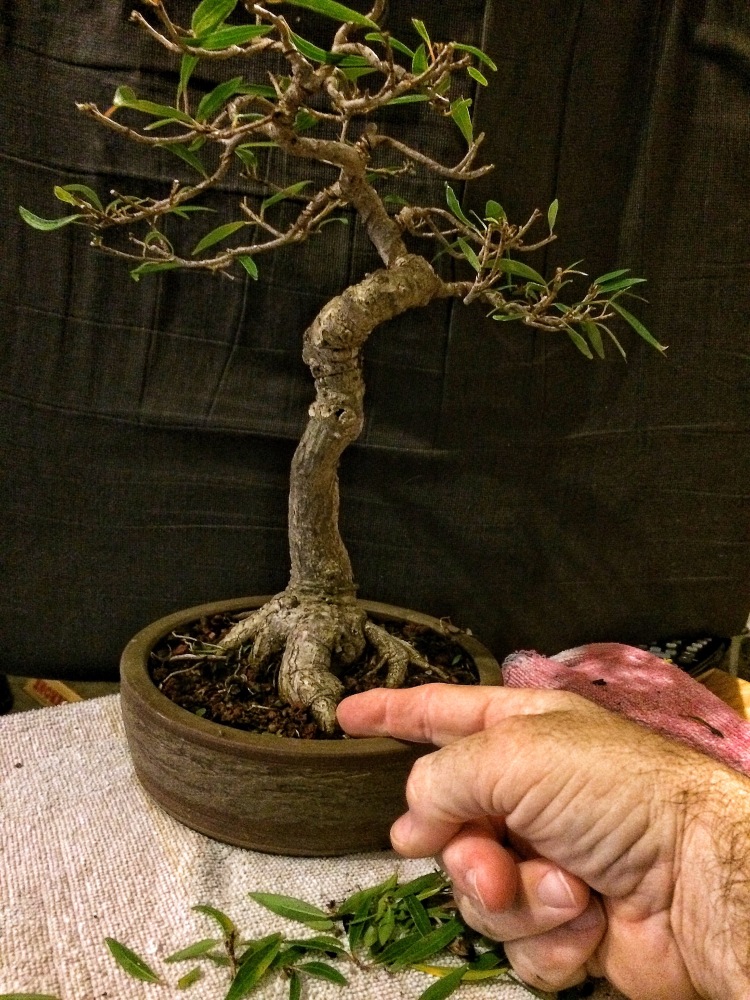
What I’ll do when I repot in the spring is maybe either remove it.
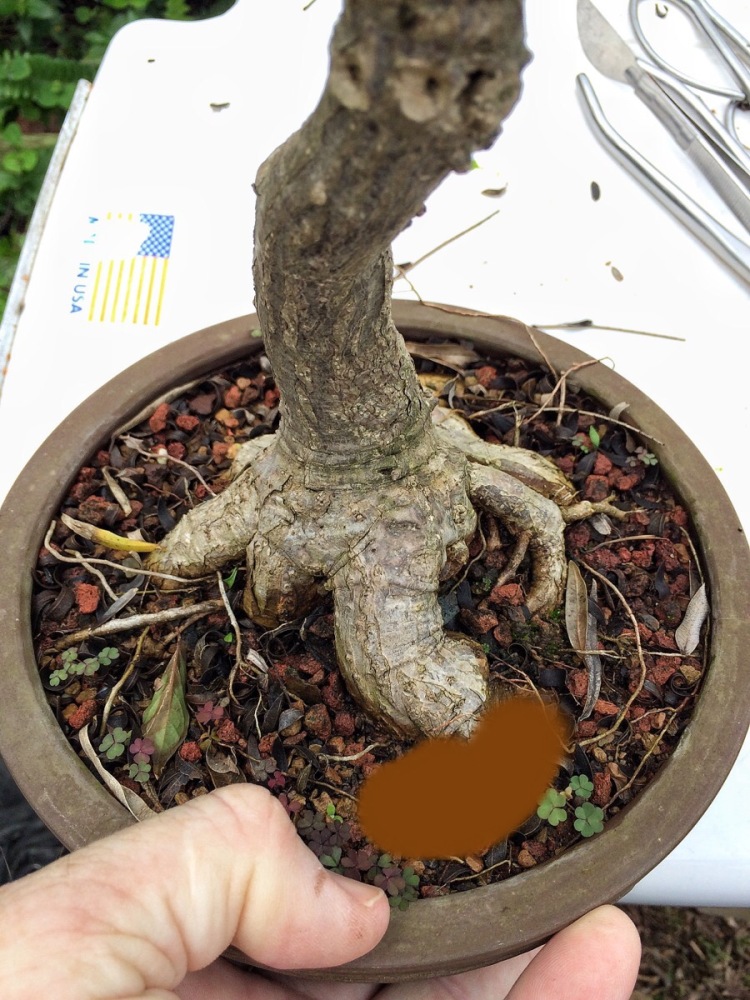
Or split it.

Which is what I’ll probably do.
But that’s several months away.
Here’s the tree all trimmed.
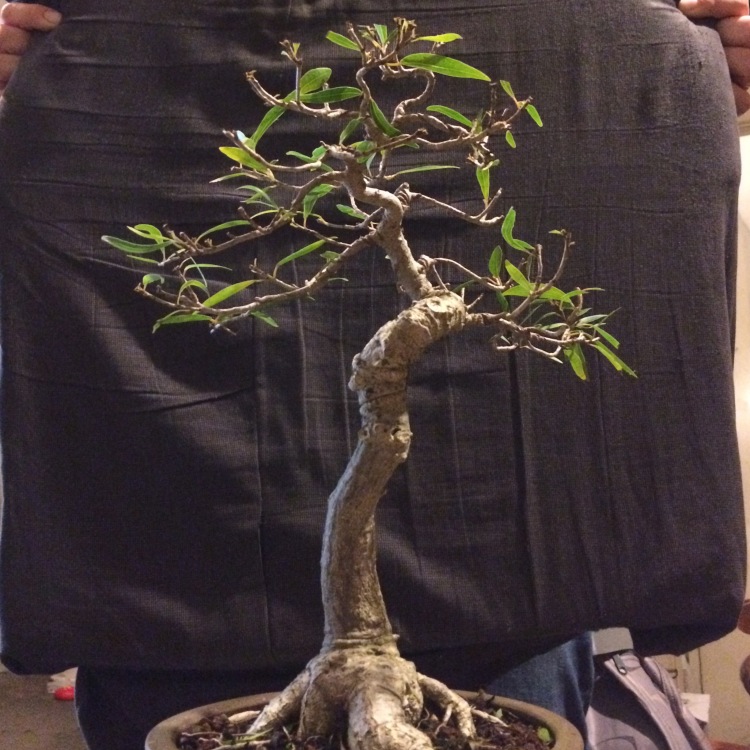
What now? I dump gobs of organic fertilizer on the soil surface, water it in well, and I put it in the greenhouse.
The temp inside is about 10-15 degrees Fahrenheit higher than outside, which should start pushing growth tomorrow rather that in late March, which is what would happen if I left it outside.
And even though it is a bunjin, I prefer this view best.

That’s the last tropical I need to worry about, next post I start the work on my deciduous trees.
A sweet little elm, in fact.
See you soon.
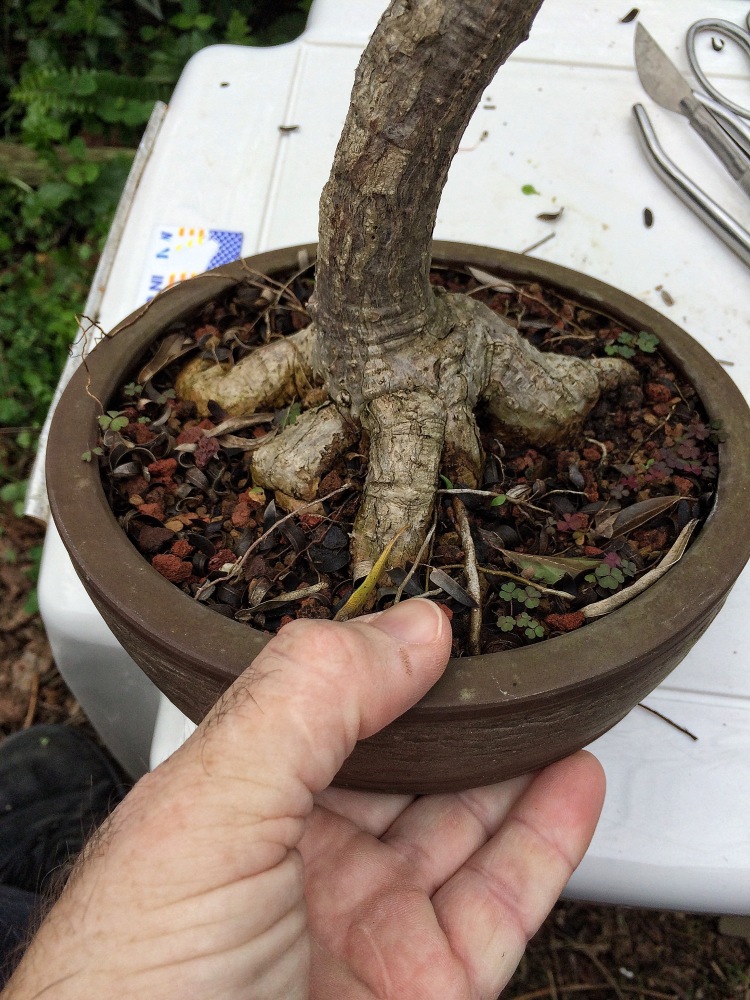

I hear that we are supposed to hold back on organic fert while in dormancy in Florida, but OK to use other stuff. From what I understand, the high nitrogen would push too many buds and place them at risk if temps drop. Did I misunderstand, or is that up for discussion?
LikeLike
You heard it slightly wrong. You don’t use synthetic fertilizer when temperate trees are dormant. Which means elms, pines, juniper, etc. Tropical trees can grow through the winter so you don’t need to stop fertilizing. Unless you want a break on pruning. My ficus went dormant because it was subjected to those few 38 degree nights.
As far as organic fertilizer goes, it has less nitrogen, generally, than synthetic fertilizer does. I use strictly organic in trees growing in bonsai pots because by that point you should be controlling growth, not pushing it with synthetic ferts.
We need to talk fertilizing and why we do it ma’am, you need a class I think.
LikeLike
Reblogged this on Indiana Bonsai and commented:
Glad to see Adam recovering. I love this little bunjin style ficus.
LikeLike
Hi Adam, it is nice tree. Flat roots like you described them are really strange, agree with you on that. Just curious how they come to idea to form them into such grotesque dimensions.
LikeLike
I think because its a vanity thing, to say ” look at my technique, I can do this”.
LikeLike
I have missed your blogs so much! So glad you are back and on the mend.
LikeLike
Definitely a sweet little tree. I hope you do a post on splitting that big root.
LikeLike
That is amazing!!!! Thanks for sharing! Can I do that to mine in LA? Glad you are doing much better! Come back to Lake Charles soon!
LikeLike
Unless you can keep it warm with lots of light I would be hesitant to trim it like I did. It gets a bit colder in Lake Charles than it does here in Orlando.
LikeLike
Your nebari is much more natural……..I like your little bunjin………….
LikeLike
cant wait to see you split the root flare! thanks Adam!
LikeLike
glad to see you are BBBB. back blogging bout bonsai. must say, have missed the blogs….might have to pick up something when I stop by. driving down for a change…
LikeLike
Driving? Cool
LikeLike
Interesting thoughts on nebari. I tend to agree with you.
How long has your willow leaf ficus been in a bonsai pot? I have one similar in trunk diameter, but a bit smaller. I’d like double if not triple it’s trunk size. However I live in MD, and I can’t afford to go Jerry Meslik style. I guess potting up/root pruning over the years should get the best results(growth) for figs,and tropical bonsai material?
LikeLike
That one has only been in a bonsai pot for a few years, it’s been in a growing pot most of the time I’ve had it.
The only way to really increase trunk diameter is to let it grow tall, cut it, repeat. And up-potting every year just as you say
LikeLike